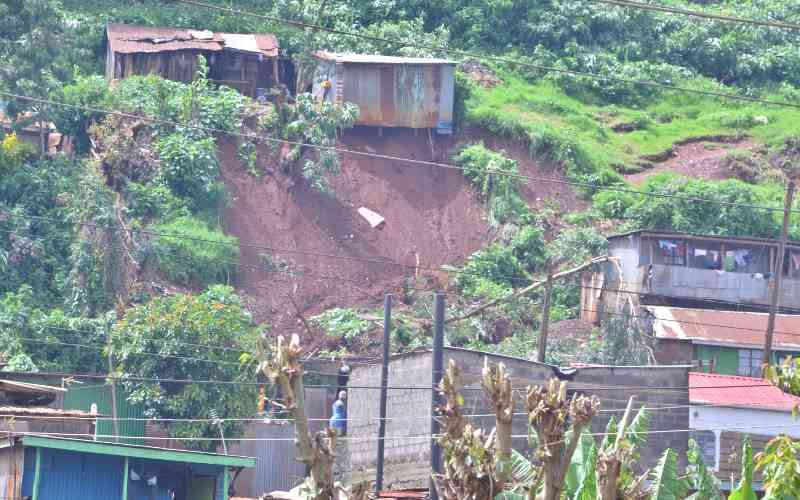The perennial tales of pain, death and sorrow attendant upon the onset of rains are here with us again. Some areas of the country are experiencing heavy rains. Whole villages are submerged in water. There is death and destruction.
Narok town on Tuesday experienced flash floods that caused a lot of damage in the town. Rescue teams had by yesterday evening recovered 15 bodies of people swept to death by the raging waters. There are fears the death toll could be much higher, with several people reported missing. Property worth millions is reported to have been destroyed, including at least 10 vehicles that were swept away.
In Nairobi, it takes only a few hours of rain to render sections of city roads impassable. Mombasa Road, especially between General Motors and City Cabanas, becomes impassable in rain, and so are sections of Uhuru Highway, Langata Road and Ngong Road. Overnight rains on Sunday marooned residents of Imara Daima in Nairobi.
The tale is the same in a good number of other estates, something that points to poor and haphazard planning within the city. Understandably, the demand for houses as Nairobi expands is great, but the city's planning and inspectorate departments are clearly sleeping on the job.
Narok town, like many of the Nairobi city estates, was built on natural water ways. In fact, plans by governor Samuel Tunai to relocate the town were thwarted by his political opponents. It might be time the matter was reviewed.
The problem is that houses have come up constricting the natural flow of water, or in many cases like in Narok, obstructing its path. In some places, small streams have been blocked to pave way for houses while in others, buildings have been erected on wetlands. Nature, however, has a way of exacting its revenge on these intrusions. In any case, water always finds its level.
The removal of manholes along most roads and the absence of water collection points, besides the blocked sewage system, will continue to expose residents to dangers of floods and water-borne diseases.
Already, cholera is causing havoc in some parts of the country, having started in Migori and spread to Kisii, Mombasa and now Nakuru. If the same should break out in Nairobi, we cannot bear the ravages it could cause, given the mounds of garbage and congestion in informal settlements.
With better planning and management, all this rain water that is going to waste, causing death and destruction in its wake, could be harvested, treated and resupplied to address the water shortages that face many of the residential areas in Nairobi and other fast-growing towns. In countries like Brazil, Argentina, Honduras and Costa Rica, to mention but a few, they have perfected the art of harvesting rain water from rooftops for use in the semi-arid areas of the countries.
Japan has optimised rainwater harvesting to alleviate water shortages, control flooding and store water for emergencies. In Berlin, houses are constructed with underground tanks to which harvested rain water is channelled.
These countries provide models of ways of manipulating nature to serve human and from which our city planners can learn from in not only fighting floods, but solving persistent water shortages; killing two birds using one stone. Real estate owners should, perhaps, be compelled to build basement water collection points, besides having workable drainage systems. Finally, an upgrade of the existing drainage system is in order.
 The Standard Group Plc is a
multi-media organization with investments in media platforms spanning newspaper
print operations, television, radio broadcasting, digital and online services. The
Standard Group is recognized as a leading multi-media house in Kenya with a key
influence in matters of national and international interest.
The Standard Group Plc is a
multi-media organization with investments in media platforms spanning newspaper
print operations, television, radio broadcasting, digital and online services. The
Standard Group is recognized as a leading multi-media house in Kenya with a key
influence in matters of national and international interest.
 The Standard Group Plc is a
multi-media organization with investments in media platforms spanning newspaper
print operations, television, radio broadcasting, digital and online services. The
Standard Group is recognized as a leading multi-media house in Kenya with a key
influence in matters of national and international interest.
The Standard Group Plc is a
multi-media organization with investments in media platforms spanning newspaper
print operations, television, radio broadcasting, digital and online services. The
Standard Group is recognized as a leading multi-media house in Kenya with a key
influence in matters of national and international interest.








